日本語版はこちらをクリック
With many thanks to my old American friend for her kind revision of the original version "SENDAI PEACE TANABATA FOR NUCLEAR BAN 1."
--------------------------------------
CONTENTS
Preface
Section 1. What is the Tanabata Festival?
Section 2. History of the Sendai Tanabata
Section 3. How the Sendai Peace Tanabata was launched and developed
Section 4. Viewing the Peace Tanabata site
Section 5. Making paper cranes and subsequent works
--------------------------------------------------
To see the following sections click here
Section 6. Japan is not the only nation that suffered atomic bombing
Section 7. Impact of President Obama’s Speech
Section 8. Was the bombing of Hiroshima necessary?
Section 9. Desirable future for the world
---------------------------------------
PREFACE
Since President Obama’s speech in Prague presenting his vision for a peaceful and secure world without nuclear weapons, support for this goal has been growing. In mid-July, we happened to hear from our friend Mrs. S in Sendai that she was making chains of the paper cranes that are so well-known in Japan as symbols representing happiness and longevity. This was part of the project of a citizen group that planned to display large ornaments composed of tens of thousands of paper cranes at the Sendai Peace Tanabata festival as an appeal for the abolition of nuclear weapons. Being very sympathetic with this goal, we decided to visit Sendai to meet Mrs. S and to attend the festival that took place from August 6 to 8, 2009.
Section 1. What is the Tanabata Festival?
Tanabata is a Japanese star festival, derived from the Chinese star festival. It celebrates the meeting of Vega and Altair, stars which are separated for most of the year by the Milky Way, meeting only on the seventh day of the seventh lunar month. The festival has been celebrated by the general public since the early 16th century, and it has become associated with various Japanese traditions. Early on, people celebrated by writing wishes, sometimes in the form of poetry, on small pieces of paper and hanging the papers on bamboo branches. As the festival became more popular, it became an exciting tourist attraction and commercial venture. Now gigantic ornaments have replaced the simpler paper wishes. The figure below shows the typical composition of the modern Tanabata ornament. It is composed of an ornamental ball atop a support ring, with beautifully decorated paper strips hanging from the support ring. The decoration of the paper strips varies greatly; and in some cases, chains of paper cranes connected with strings are use instead of paper strips. The whole ornament is called a‘streamer.’

Section 2. History of the Sendai Tanabata
The Sendai Tanabata began in the early 16th century and was enthusiastically celebrated throughout the Edo era. However, it started to decline with the regime change of the Meiji Restoration (1868) and subsequent adoption of the solar calendar. The festival declined further with the economic recession after World War I. In 1927, the festival was revived by ambitious merchants and scheduled for August 6 to 8, dates which by chance coincided with the dates of the atomic bombing of Hiroshima and Nagasaki in 1945. The festival declined again during World War II but was revived again in 1946, the year after the war ended. Nowadays, the Sendai Tanabata is celebrated enthusiastically with hundreds of large streamers displayed along the downtown shopping mall.
Section 3. How the Sendai Peace Tanabata was launched and developed
The Sendai Peace Tanabata was first celebrated in 1976, the 200th anniversary year of the Independence of the United States, and an American army band appeared at the festival. Marching bands are common participants in US celebrations where they are eagerly applauded. However, having such an activity on the memorial day of the atomic bombings of Japanese cities caused many Sendai citizens to feel overwhelming discomfort. This prompted Mr. Shigeo Aburaya and Mr. Junshiro Kawabata to organize a group of volunteers who would proclaim “NO MORE HIROSHIMA, NO MORE NAGASAKI” and pray for peace and a world free of nuclear weapons. The group’s aspirations are represented by the streamers decorated with thousands of paper cranes that they prepare for display at the Sendai Tanabata festival. They started with fewer than 30 citizens and two thousand paper cranes. However, this citizens’ undertaking has grown remarkably, and this year about a million paper cranes were donated by 25 thousand people ranging from a 5-year-old child to a 103-year-old senior citizen.

Mr. Aburaya (left), and Mr. Kawabata (right)
[Contact Information: “HEIWAOINORU TANABATA” SHIMIN-NO-TSUDOI; Representative: Mr. Shigeo Aburaya, c/o Sendai YMCA, 9-6 Tate-machi, Aobaku, Sendai Japan 980-0822; Phone: 8122-222-7533]
Section 4. Viewing the Peace Tanabata Site

As shown by the first movie, five large streamers each composed of about 36 thousand paper cranes swayed at the site. They bore a Japanese lettering spelling “PEACE TANABATA, “NO MORE HIROHIMA,” or “NO MORE NAGASAKI.” Some streamers bore messages written in Japanese, English (figure shown above ), Chinese or Hanguel. There was also a colorful board bearing the list of schools that donated paper cranes. Individual streamers are composed of 120 chains of paper cranes each containing about 300 units. Chains of cranes not used to decorate streamers were formed into leis and distributed to visitors as a reminder to appeal for peace and abolition of nuclear weapons as can be seen in the following movie.
Streamers have been displayed internationally since their unveiling in an antinuclear rally of a million people held in New York during the second UN Special Session on Disarmament in 1982. The leis have also been featured at antinuclear demonstrations overseas.
Section 5. Making paper cranes and subsequent works
Folding a piece of paper to form a crane is a traditional example of Japanese “Origami”. However, fewer and fewer people know how to fold paper cranes nowadays. Since I am not an exception, I asked Mrs. S to demonstrate at the festival site. The following movie shows how a piece of 7.5 cm square paper is transformed into a three-dimensional crane.
The starting scene shows a paper folded once along the diagonal line. Since the three-dimensional figures take up considerable space, the paper cranes used for streamers are left in their two-dimensional folded form.
Since Mrs. S spent about 3 min folding one crane, we can estimate that to make a million of them, each of the 25,000 contributors worked for about 2 hours to fold 40 cranes. Since it is likely that the average contributors folded fewer cranes, major contributors must each have spent more than several days at their task.
Formation of chained paper cranes is also an elaborate work. Instead of connecting them in random fashion, volunteers paid careful attention to their arrangement so that completed streamers and leis are as beautiful as possible. Please see the collage below showing photos of workers. Mrs. S said that as she continued folding, she felt her aspiration for peace welling up. I imagine the 25.000 contributors and volunteer workers felt similar emotions. I hope the wishes of the 25.000 contributors will inspire of a great majority of people around the world to support initiatives for peace and abolition of nuclear weapons.
90812 平和七夕コラージュ150:
To see "A MILLION PAPER CRANES FOR --- Part. II", click here
With many thanks to my old American friend for her kind revision of the original version "SENDAI PEACE TANABATA FOR NUCLEAR BAN 1."
--------------------------------------
CONTENTS
Preface
Section 1. What is the Tanabata Festival?
Section 2. History of the Sendai Tanabata
Section 3. How the Sendai Peace Tanabata was launched and developed
Section 4. Viewing the Peace Tanabata site
Section 5. Making paper cranes and subsequent works
--------------------------------------------------
To see the following sections click here
Section 6. Japan is not the only nation that suffered atomic bombing
Section 7. Impact of President Obama’s Speech
Section 8. Was the bombing of Hiroshima necessary?
Section 9. Desirable future for the world
---------------------------------------
PREFACE
Since President Obama’s speech in Prague presenting his vision for a peaceful and secure world without nuclear weapons, support for this goal has been growing. In mid-July, we happened to hear from our friend Mrs. S in Sendai that she was making chains of the paper cranes that are so well-known in Japan as symbols representing happiness and longevity. This was part of the project of a citizen group that planned to display large ornaments composed of tens of thousands of paper cranes at the Sendai Peace Tanabata festival as an appeal for the abolition of nuclear weapons. Being very sympathetic with this goal, we decided to visit Sendai to meet Mrs. S and to attend the festival that took place from August 6 to 8, 2009.
Section 1. What is the Tanabata Festival?
Tanabata is a Japanese star festival, derived from the Chinese star festival. It celebrates the meeting of Vega and Altair, stars which are separated for most of the year by the Milky Way, meeting only on the seventh day of the seventh lunar month. The festival has been celebrated by the general public since the early 16th century, and it has become associated with various Japanese traditions. Early on, people celebrated by writing wishes, sometimes in the form of poetry, on small pieces of paper and hanging the papers on bamboo branches. As the festival became more popular, it became an exciting tourist attraction and commercial venture. Now gigantic ornaments have replaced the simpler paper wishes. The figure below shows the typical composition of the modern Tanabata ornament. It is composed of an ornamental ball atop a support ring, with beautifully decorated paper strips hanging from the support ring. The decoration of the paper strips varies greatly; and in some cases, chains of paper cranes connected with strings are use instead of paper strips. The whole ornament is called a‘streamer.’

Section 2. History of the Sendai Tanabata
The Sendai Tanabata began in the early 16th century and was enthusiastically celebrated throughout the Edo era. However, it started to decline with the regime change of the Meiji Restoration (1868) and subsequent adoption of the solar calendar. The festival declined further with the economic recession after World War I. In 1927, the festival was revived by ambitious merchants and scheduled for August 6 to 8, dates which by chance coincided with the dates of the atomic bombing of Hiroshima and Nagasaki in 1945. The festival declined again during World War II but was revived again in 1946, the year after the war ended. Nowadays, the Sendai Tanabata is celebrated enthusiastically with hundreds of large streamers displayed along the downtown shopping mall.
Section 3. How the Sendai Peace Tanabata was launched and developed
The Sendai Peace Tanabata was first celebrated in 1976, the 200th anniversary year of the Independence of the United States, and an American army band appeared at the festival. Marching bands are common participants in US celebrations where they are eagerly applauded. However, having such an activity on the memorial day of the atomic bombings of Japanese cities caused many Sendai citizens to feel overwhelming discomfort. This prompted Mr. Shigeo Aburaya and Mr. Junshiro Kawabata to organize a group of volunteers who would proclaim “NO MORE HIROSHIMA, NO MORE NAGASAKI” and pray for peace and a world free of nuclear weapons. The group’s aspirations are represented by the streamers decorated with thousands of paper cranes that they prepare for display at the Sendai Tanabata festival. They started with fewer than 30 citizens and two thousand paper cranes. However, this citizens’ undertaking has grown remarkably, and this year about a million paper cranes were donated by 25 thousand people ranging from a 5-year-old child to a 103-year-old senior citizen.

Mr. Aburaya (left), and Mr. Kawabata (right)
[Contact Information: “HEIWAOINORU TANABATA” SHIMIN-NO-TSUDOI; Representative: Mr. Shigeo Aburaya, c/o Sendai YMCA, 9-6 Tate-machi, Aobaku, Sendai Japan 980-0822; Phone: 8122-222-7533]
Section 4. Viewing the Peace Tanabata Site

As shown by the first movie, five large streamers each composed of about 36 thousand paper cranes swayed at the site. They bore a Japanese lettering spelling “PEACE TANABATA, “NO MORE HIROHIMA,” or “NO MORE NAGASAKI.” Some streamers bore messages written in Japanese, English (figure shown above ), Chinese or Hanguel. There was also a colorful board bearing the list of schools that donated paper cranes. Individual streamers are composed of 120 chains of paper cranes each containing about 300 units. Chains of cranes not used to decorate streamers were formed into leis and distributed to visitors as a reminder to appeal for peace and abolition of nuclear weapons as can be seen in the following movie.
Streamers have been displayed internationally since their unveiling in an antinuclear rally of a million people held in New York during the second UN Special Session on Disarmament in 1982. The leis have also been featured at antinuclear demonstrations overseas.
Section 5. Making paper cranes and subsequent works
Folding a piece of paper to form a crane is a traditional example of Japanese “Origami”. However, fewer and fewer people know how to fold paper cranes nowadays. Since I am not an exception, I asked Mrs. S to demonstrate at the festival site. The following movie shows how a piece of 7.5 cm square paper is transformed into a three-dimensional crane.
The starting scene shows a paper folded once along the diagonal line. Since the three-dimensional figures take up considerable space, the paper cranes used for streamers are left in their two-dimensional folded form.
Since Mrs. S spent about 3 min folding one crane, we can estimate that to make a million of them, each of the 25,000 contributors worked for about 2 hours to fold 40 cranes. Since it is likely that the average contributors folded fewer cranes, major contributors must each have spent more than several days at their task.
Formation of chained paper cranes is also an elaborate work. Instead of connecting them in random fashion, volunteers paid careful attention to their arrangement so that completed streamers and leis are as beautiful as possible. Please see the collage below showing photos of workers. Mrs. S said that as she continued folding, she felt her aspiration for peace welling up. I imagine the 25.000 contributors and volunteer workers felt similar emotions. I hope the wishes of the 25.000 contributors will inspire of a great majority of people around the world to support initiatives for peace and abolition of nuclear weapons.
90812 平和七夕コラージュ150:

To see "A MILLION PAPER CRANES FOR --- Part. II", click here










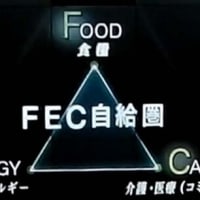
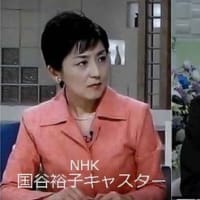
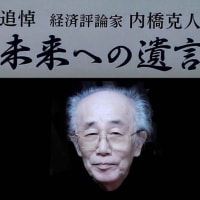
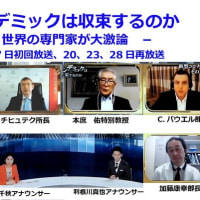
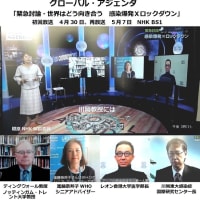
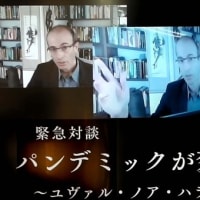
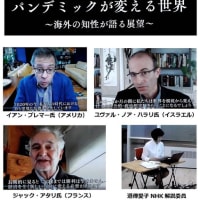
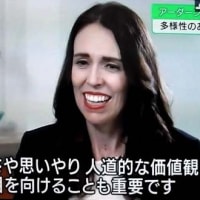
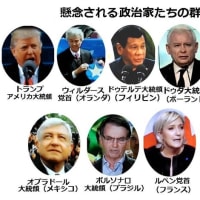
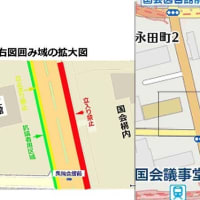






※コメント投稿者のブログIDはブログ作成者のみに通知されます